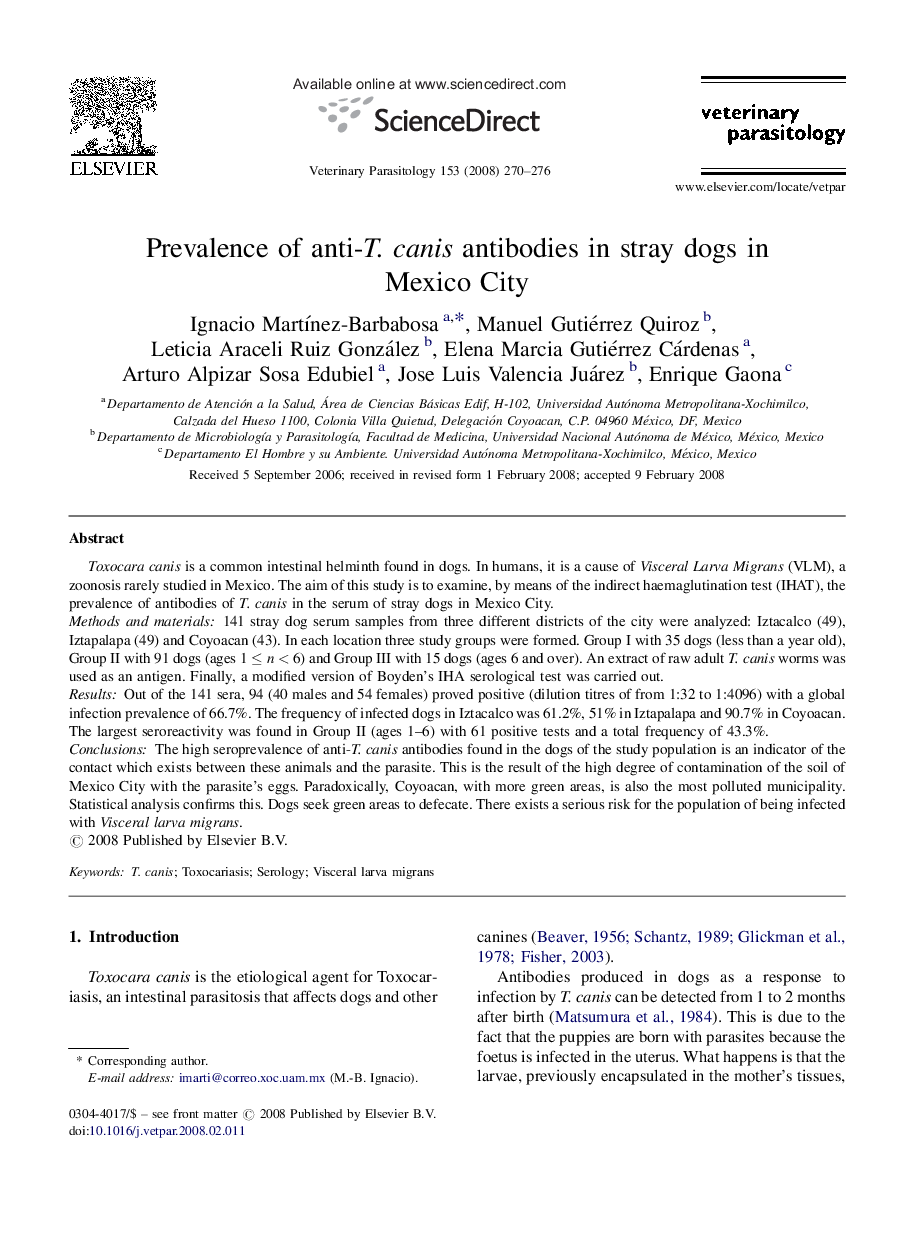| Article ID | Journal | Published Year | Pages | File Type |
|---|---|---|---|---|
| 2471713 | Veterinary Parasitology | 2008 | 7 Pages |
Toxocara canis is a common intestinal helminth found in dogs. In humans, it is a cause of Visceral Larva Migrans (VLM), a zoonosis rarely studied in Mexico. The aim of this study is to examine, by means of the indirect haemaglutination test (IHAT), the prevalence of antibodies of T. canis in the serum of stray dogs in Mexico City.Methods and materials141 stray dog serum samples from three different districts of the city were analyzed: Iztacalco (49), Iztapalapa (49) and Coyoacan (43). In each location three study groups were formed. Group I with 35 dogs (less than a year old), Group II with 91 dogs (ages 1 ≤ n < 6) and Group III with 15 dogs (ages 6 and over). An extract of raw adult T. canis worms was used as an antigen. Finally, a modified version of Boyden's IHA serological test was carried out.ResultsOut of the 141 sera, 94 (40 males and 54 females) proved positive (dilution titres of from 1:32 to 1:4096) with a global infection prevalence of 66.7%. The frequency of infected dogs in Iztacalco was 61.2%, 51% in Iztapalapa and 90.7% in Coyoacan. The largest seroreactivity was found in Group II (ages 1–6) with 61 positive tests and a total frequency of 43.3%.ConclusionsThe high seroprevalence of anti-T. canis antibodies found in the dogs of the study population is an indicator of the contact which exists between these animals and the parasite. This is the result of the high degree of contamination of the soil of Mexico City with the parasite's eggs. Paradoxically, Coyoacan, with more green areas, is also the most polluted municipality. Statistical analysis confirms this. Dogs seek green areas to defecate. There exists a serious risk for the population of being infected with Visceral larva migrans.
